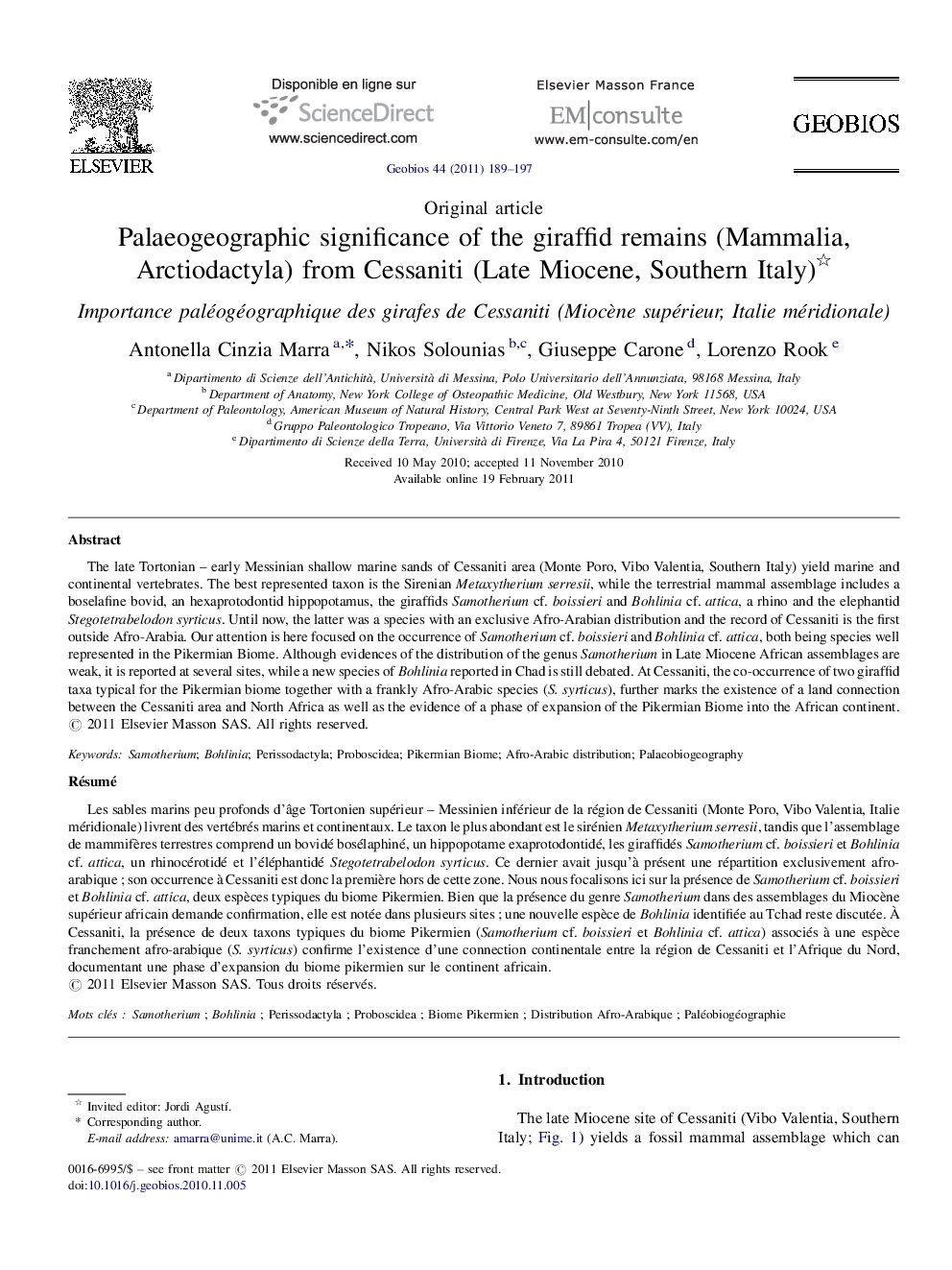| Article ID | Journal | Published Year | Pages | File Type |
|---|---|---|---|---|
| 4748167 | Geobios | 2011 | 9 Pages |
The late Tortonian – early Messinian shallow marine sands of Cessaniti area (Monte Poro, Vibo Valentia, Southern Italy) yield marine and continental vertebrates. The best represented taxon is the Sirenian Metaxytherium serresii, while the terrestrial mammal assemblage includes a boselafine bovid, an hexaprotodontid hippopotamus, the giraffids Samotherium cf. boissieri and Bohlinia cf. attica, a rhino and the elephantid Stegotetrabelodon syrticus. Until now, the latter was a species with an exclusive Afro-Arabian distribution and the record of Cessaniti is the first outside Afro-Arabia. Our attention is here focused on the occurrence of Samotherium cf. boissieri and Bohlinia cf. attica, both being species well represented in the Pikermian Biome. Although evidences of the distribution of the genus Samotherium in Late Miocene African assemblages are weak, it is reported at several sites, while a new species of Bohlinia reported in Chad is still debated. At Cessaniti, the co-occurrence of two giraffid taxa typical for the Pikermian biome together with a frankly Afro-Arabic species (S. syrticus), further marks the existence of a land connection between the Cessaniti area and North Africa as well as the evidence of a phase of expansion of the Pikermian Biome into the African continent.
RésuméLes sables marins peu profonds d’âge Tortonien supérieur – Messinien inférieur de la région de Cessaniti (Monte Poro, Vibo Valentia, Italie méridionale) livrent des vertébrés marins et continentaux. Le taxon le plus abondant est le sirénien Metaxytherium serresii, tandis que l’assemblage de mammifères terrestres comprend un bovidé bosélaphiné, un hippopotame exaprotodontidé, les giraffidés Samotherium cf. boissieri et Bohlinia cf. attica, un rhinocérotidé et l’éléphantidé Stegotetrabelodon syrticus. Ce dernier avait jusqu’à présent une répartition exclusivement afro-arabique ; son occurrence à Cessaniti est donc la première hors de cette zone. Nous nous focalisons ici sur la présence de Samotherium cf. boissieri et Bohlinia cf. attica, deux espèces typiques du biome Pikermien. Bien que la présence du genre Samotherium dans des assemblages du Miocène supérieur africain demande confirmation, elle est notée dans plusieurs sites ; une nouvelle espèce de Bohlinia identifiée au Tchad reste discutée. À Cessaniti, la présence de deux taxons typiques du biome Pikermien (Samotherium cf. boissieri et Bohlinia cf. attica) associés à une espèce franchement afro-arabique (S. syrticus) confirme l’existence d’une connection continentale entre la région de Cessaniti et l’Afrique du Nord, documentant une phase d’expansion du biome pikermien sur le continent africain.
